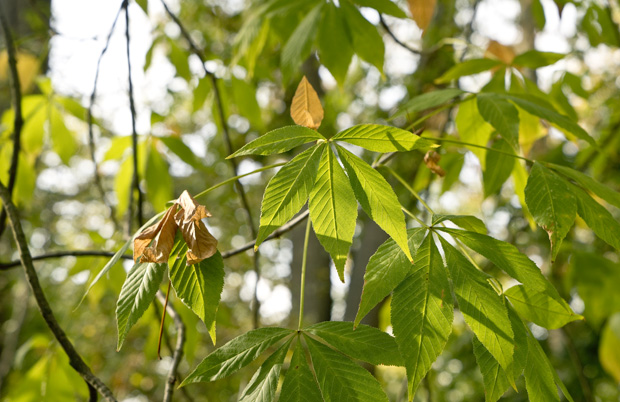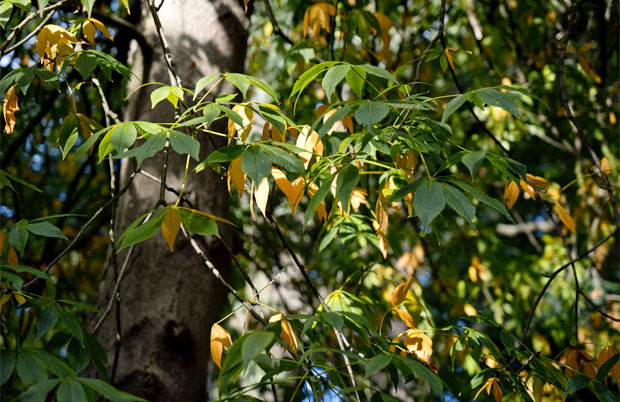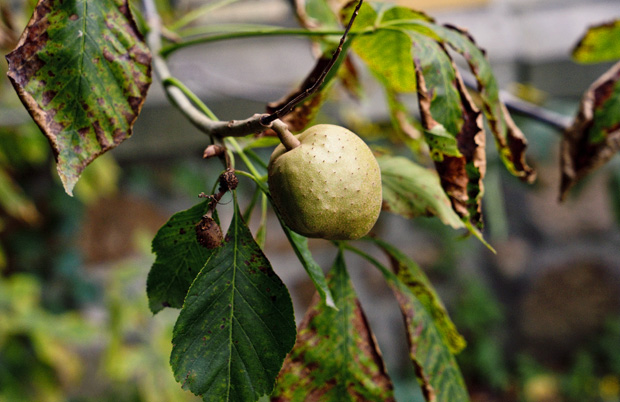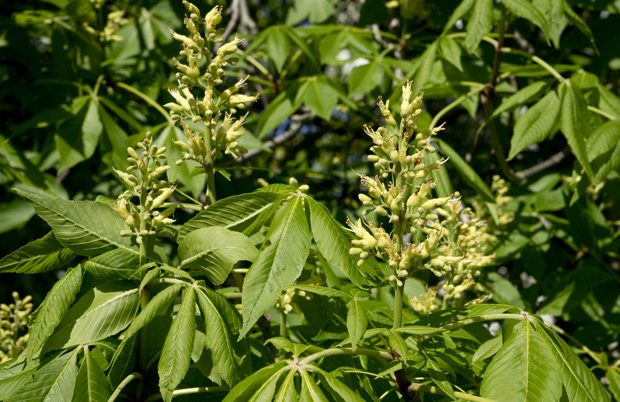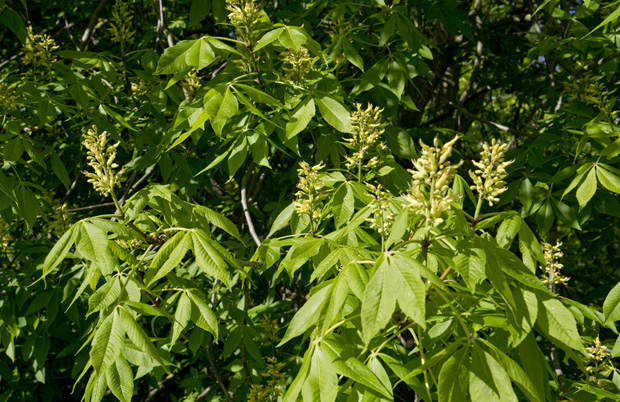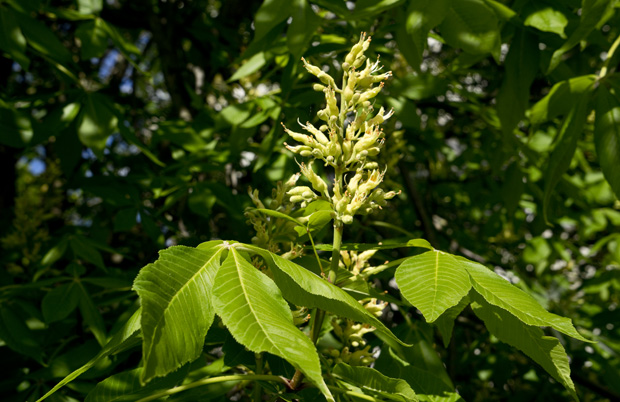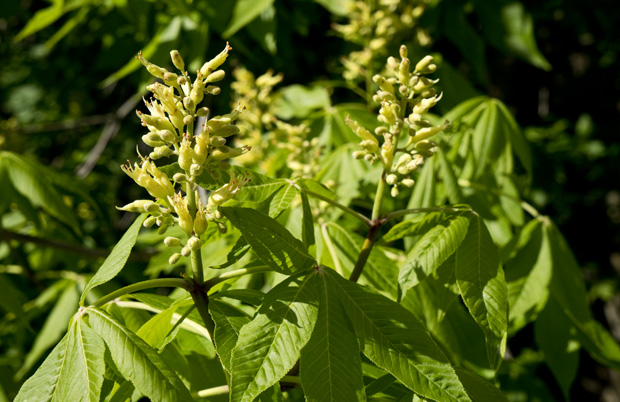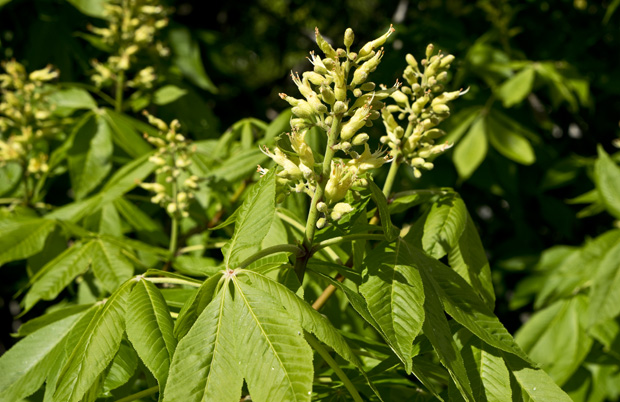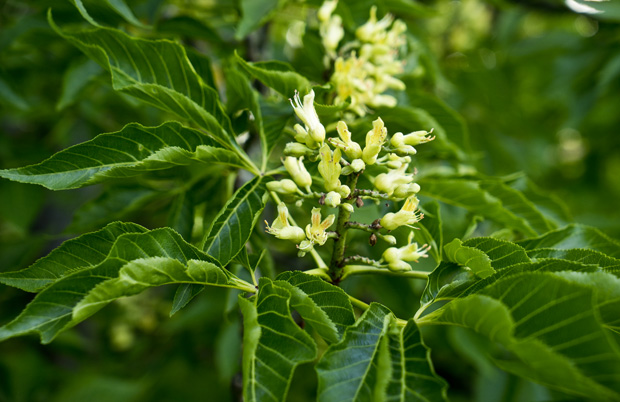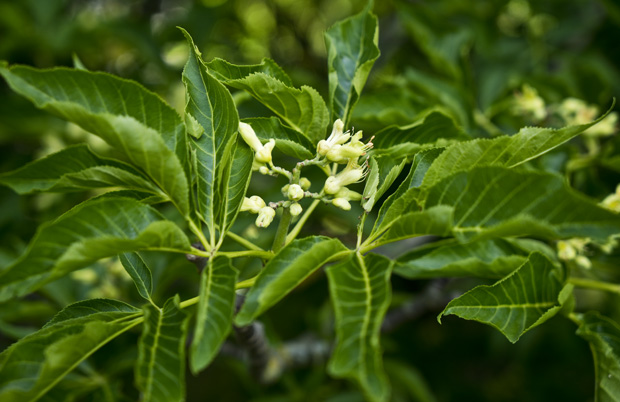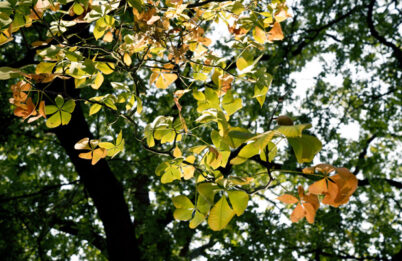Ohio-Roßkastanie (Südosten USA)
Die Ohio-Rosskastanie ist im Südosten Nordamerikas heimisch und kommt dort in zwei Varietäten (A. glabra var. glabra, A. glabra var. arguta) vor, die sich vor allem durch ihre Blätter unterscheiden. Sie wächst strauch- oder baumartig bis 10 m (in ihrer Heimat bis 20 m) und bildet kräftige Stämme und breit kegelförmige Kronen. Die Laubblätter sind handförmig gefiedert und bestehen aus 5 bis 7 Fiederblättchen. Ihre oberseitig dunkelgrünen, unterseitig bleich- oder blaugrünen haben eine länglich-eiförmige bis elliptisch-eiförmige Form mit zugespitztem Ende. Im Gegensatz zu den meisten Rosskastanien färben sich die Blätter im Herbst meist herrlich orangefarben. Im Mai erscheinen breite aber geringblühende Rispen mit fahlgelben oder grüngelben Einzelblüten. Die recht kleinen hellbraunen Kapselfrüchte sind ei- bis verkehrt-eiförmig und haben ein höckeriges, selten stacheliges Perikarp. Pro Frucht gibt es 1 bis 3 dunkelbraune Samen (selten auch 4 bis 6) mit einen Durchmesser von 2 bis 4 cm mit kleinem, hellem Nabel.
| Habitus | Strauch / Kleinbaum, runde bis breit kegelförmige dichte Krone |
|---|---|
| Blatt | handförmig gefingert, 5-7 Fiederblättchen länglich-eiförmig bis elliptisch-eiförmig mit zugespitztem Blattende, oberseitig dunkelgrün, unterseitig bleich- oder blaugrün |
| Blüte | breit pyramidenförmige Rispen, fahlgelbe oder grüngelbe Einzelblüten, geringblühend |
| Frucht | fachspaltige Kapselfrüchte mit höckerigem, selten stacheligem, hellbraunem Perikarp; kugelige Samen, zu 1 bis 3 (selten zu 4 bis 6) in der Frucht, kleiner heller Nabel |
| Wurzel | Herzwurzler, tief, weitreichend |
| Standort | sonnig bis absonnig |
| Boden | niedrige Anforderungen, frisch, humos, sandig – lehmig, keine Staunässe |
| Härtegrad | Zone 4 (-34,4 bis -28,9 °C) |
| Fauna | Bienen, Falter, kleine Säugetiere |
| Hinweise | außergewöhnlich schöne Herbstfärbung, sehr filigrane Rosskastanie |
| Synonyme | Amerikanische Rosskastanie |

